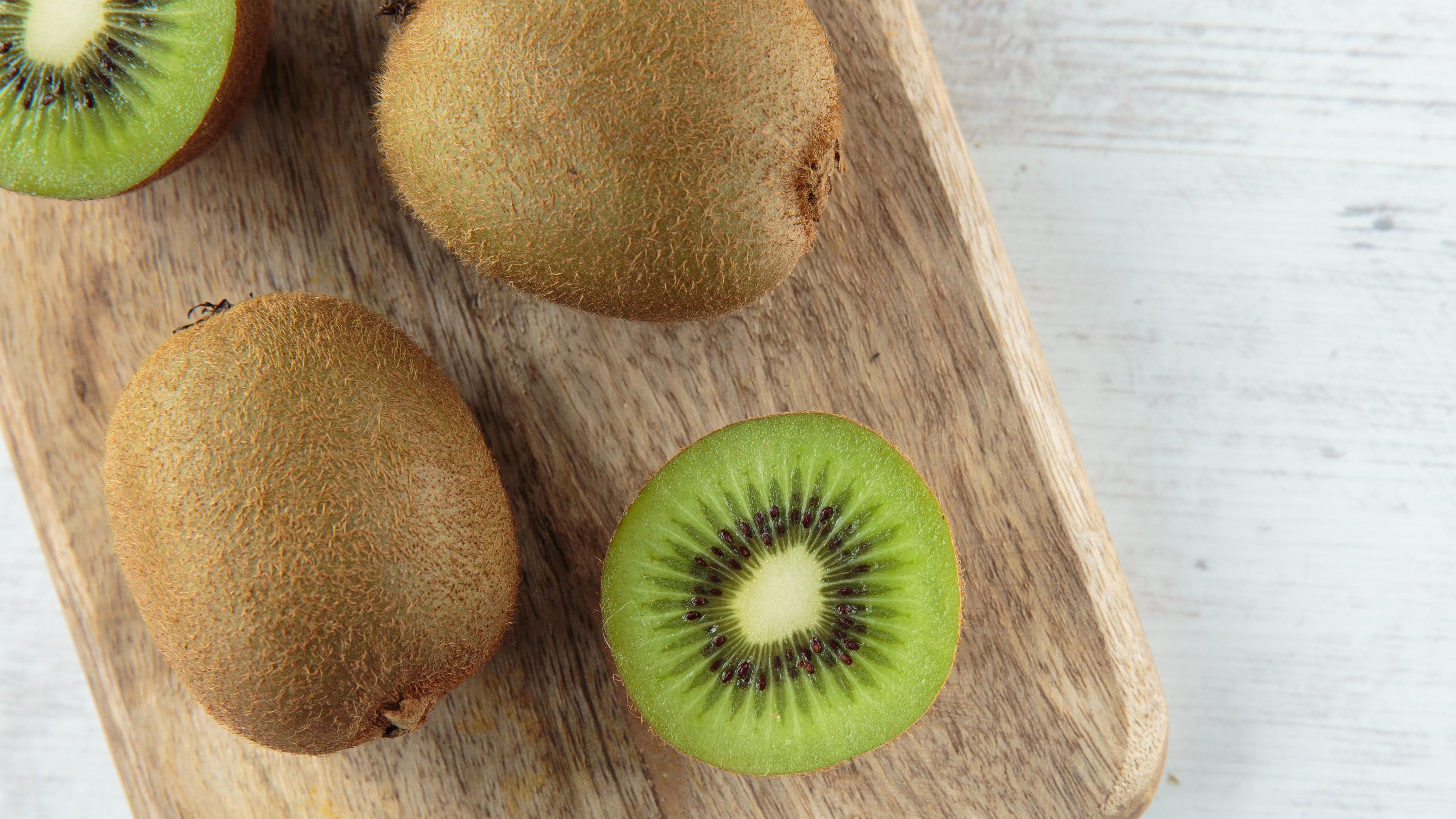Stop Ignoring Kiwi At The Grocery Store
The mild kiwifruit with its fuzzy brown skin is well worth your time.
At team building events—just kidding, I don't go to those; I mean on dating apps—I sometimes say, "If I were a fruit, I'd be a kiwi." From the outside, I look like any other brunette. But inside, I'm a starburst of color, and I'm sweet but not too sweet, with just a little bit of tartness. That metaphor maybe needs some work, but the point is that kiwi, despite its many nutrients and benefits, is only infrequently mentioned in the internet's endless roundups of the best superfoods. Its mellow flavor, small size, and fuzzy exterior keep it firmly planted in the "underrated produce" category. But kiwi has a lot going for it, and there are many reasons you shouldn't pass over it on your next grocery run.
What is kiwi?
Kiwi, aka kiwifruit if you're in New Zealand or Chinese gooseberry if you're feeling technical, is a berry native to China that is named after a bird that is also native to China. The fruit made its way to New Zealand at the beginning of the 20th century. Then, during World War II, Americans and Brits stationed in New Zealand got hooked on the cute fruit and began exporting it to the United States in the 1960s. That's one potential reason that so many people are sleeping on kiwi: Its entrance into the American market is so recent that your parents and/or grandparents probably didn't include kiwi on your plate as part of a balanced breakfast.
You're almost always going to see green and golden kiwi varieties in your local grocery store, though purple, red, and orange kiwis also exist, among many other types. The New Zealand cultivars bear names that all sound like the stuck-up foil in a romantic comedy: Monty, Bruno, Blake, and Hayward, the last of which you're most likely to find at the grocery store.
Kiwi berries, meanwhile, are a different thing. They are related, and just as kiwifruit is a berry, the kiwi berry is also a berry—but a kiwifruit is not a kiwi berry. Try to keep up.
The benefits of kiwi
A kiwi is not too much of anything (which is pretty unlike me, actually). It's not too sweet, not too tart, not too citrusy, just a little of all those things. It has a soft, juicy texture which is pleasant in all its potential uses. Some people say it tastes like a cross between a more mainstream berry (strawberry, raspberry) and a citrus fruit.
While some experts consider the kiwi a niche fruit because it takes up only 0.22% of the "global fruit bowl," it has many nutritional benefits. It's true that you can't compare apples to oranges when it comes to folate and vitamin C (oranges win), but once you get into the granular assessment of the milligrams and micrograms of each nutrient, you can absolutely compare kiwis and oranges. When it comes to important components such as fiber, potassium, magnesium, and vitamin C, kiwis and oranges are comparable. You still would get nearly twice as much folate from an orange, though, which is why orange juice is hyped up in the marketplace and why kiwi juice doesn't really exist (it should!).
You can, of course, make juice out of anything at all if you try hard enough. Juice is a lot like soup in that way.
How to use kiwi
The cost of kiwi remains fairly reasonable, even as the price of many other berries has skyrocketed. Pound for pound, they're often less expensive than seasonal apples or oranges; this has a lot to do with supply and demand, as the less hairy and therefore more desirable varieties of kiwifruit often command a higher price.
About that skin, though: you can eat it! It's got more antioxidants than the flesh of the fruit, and it also contains Vitamins C and E (and you can just rub some of the fuzz off with a towel before eating). But if you want to remove the skin instead, here's how to cut it open.
Beyond snacking, you can use a kiwi like you'd use most any fruit. Besides its obvious addition to fruit salads, you can also include them in savory salads the way you might include other berries. Or create a fun party dip with kiwi salsa (which can also be served with fish or chicken). Due to its flavor, it makes for a great addition to many desserts, like this bombe, and because of its beauty, it can decorate tarts or tortes (there is a difference!). Of course, they go great in any smoothie or juice and, by extension, add great flavor and color to cocktails.
While a kiwi may look like an unimpressive, fuzzy dirt clod from the outside, don't judge it on appearance alone; it's what's inside that counts. This mild fruit is well worth your time.
